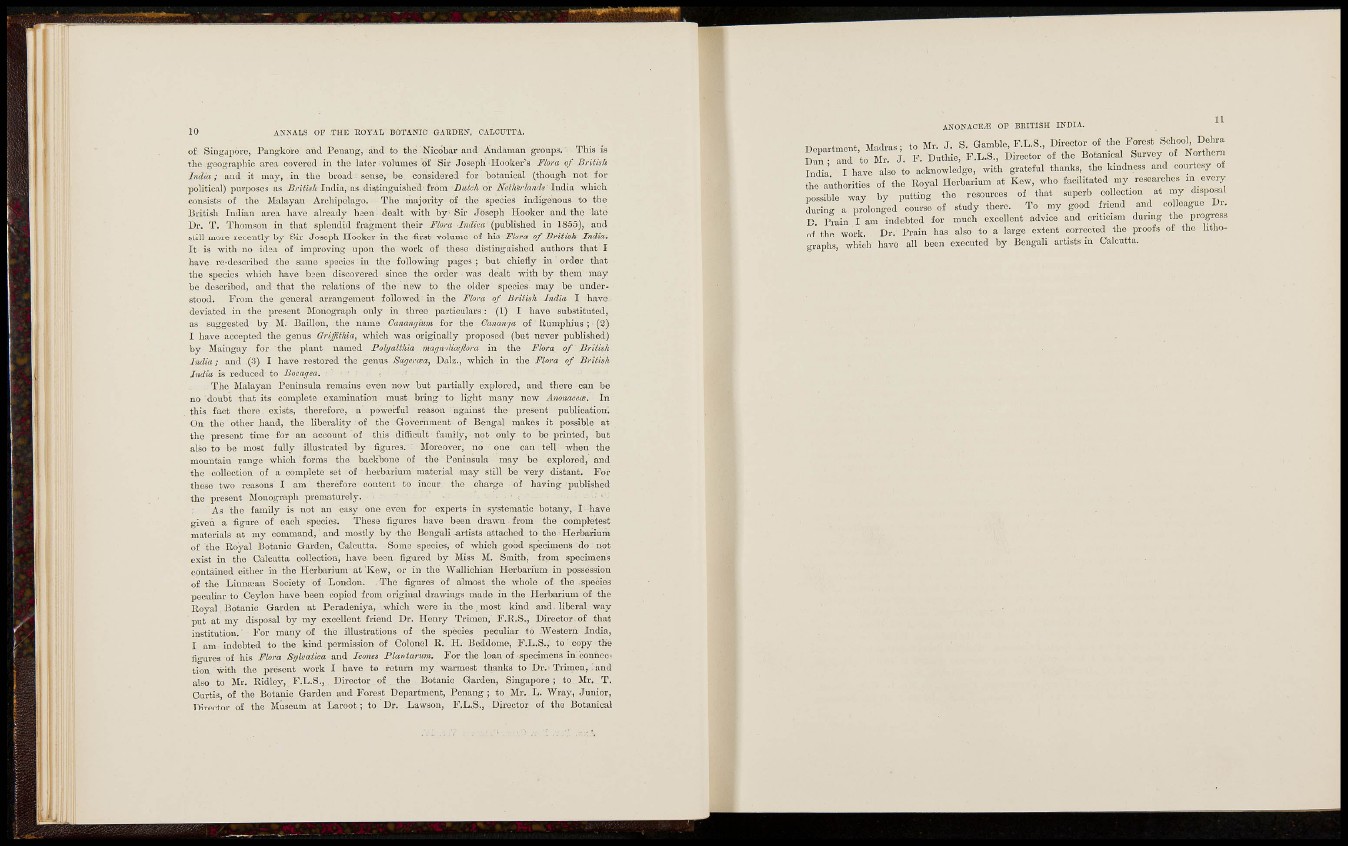
1 0 AN.VALS OF THE EOYAt, BOTAIHC GARDEN', CALCUTTA.
of Sing.iporc, Pangkoro aud Peaang, and to the Nicobar and Andaman groups. Thia is
tliG goographie area covei-ed in the latei* volumes of Sir Joseph Ilooker'a Flora of British
India ; and it may, in the bfoad sense, be considered for botanical (though not for
political) purposes as British India, as diatingaishcd from Duic/t or Netkirlands India which
consists of the Malayan Archipelago. The majority of the species indigenous to the
British Indian area have already bijon dealt with by- Sir Joseph Hooker and the late
Dr. T. Thonison in that splendid fragment tlieir Flora Indica (published in 1855), and
still more recently by Sir Joseph Hooker in the first volume of his Flora of British India.
It is with no id9a of improving upon the work of these distinguished authors that I
have re-dcscribed the same species in the following pages ; but chiefly in order that
the species which have been discovered since the order was dealt with by them may
be described, and that the relations of the new to the older species may be understood.
From the general arrangement followed in the Flora of British India I have
deviated in the present Monograph only in three particulars: (1) I have substituted,
as suggested by JI. 13aillon, the name Canangixm for the Cananja of liumphius; (2)
I have accepted the genus GriffUhia, which was originally proposed (but never published)
by Maingay for the plant named Pohjalthia magn')lia;Jlora in the Flora of British
India; and (3) I have restored the genus Sagcrcea, Dalz., which in the Flora of British
India is reduced to Bocagea.
The Malayan Peninsula remains even now but partially explored, and there can be
no doubt that its complete examination must bring to light many new Anonaceie. In
this fact there exists, therefore, a powerful reason against the present publication.
On the other .hand, the liberality of the Government of Bengal makes it possible at
the present time for an account of this difficult family, not only to bo printed, but
also to be most fully illustrated by figures. ' Moreover, no one can tell when the
mountain range which forms the backbone of the Peninsula may be explored, and
the collection of a complete set of herbarium material may still be very distant. For
these two reasons I am therefore content to incur tliG charge of having- published
the present Monograph prematurely.
As the family is not an easy one even for experts in systematic botany, I have
given a figure of each species. These figures have been drawn from the completest
materials at my command, and mostly by the Bengali -artists attached to the Herbarium
of the Royal Botanic Garden, Calcutta. Some species, of which good specimens do not
exist in the Calcutta collection, have been figured by Miss M. Smith, from specimeas
contained either in the Herbarium at 'Kew, or in the Wallichian Herbarium' in possession
of the Linnoian Society of London. The figures of almost the whole of tlie .species
peculiar to Ceylon have been copied from original drawings made in the Herbarium of the
Royal Botanic Garden at Peradeniya, wliich were in the _ most kind and. liberal way
put at n\y disposal by ray excellent friend Dr. Henry Trimen, F.R.S., Director of that
institution.' For many of the illustrations of the species peculiar to Western India,
I am indebted to the kind permission of Colonel R. II. Beddome, F.L.S., to' copy the
fio-ures of his Flora Sgivatica and Iconea Planiarim. For the loan of spedmens in connection
with the present work I have to return my warmest thanks to Dr. Trimen, : and
also to Mr. Ridley, F.L.S., Director of the Botanic Garden, Singapore; to Mr. T.
Curtis, of the Botanic Garden and Forest Department, Penang ; to Mr. L. Wray, Junior,
Director of the Museum at Laroot; to Dr. Lawson, F.L..S., Director of tho Botanical
¿NONAGED OP BEITISH INDIA.
Dopartment, Madras; to Mr. J. S. Gamble, F.L.S., Director of the Forest School^ Dchra
d T and to Mr. J. F. Duthie, F.L.S., Director of the Botanical Survey of Northern
India' ' l have also to acknowledge, with grateful thanks, tho kindness and courtosy of
the authorities of the Royal Herbarium at Kew, who facilitated my researches in every
possible way by putting the resources of that superb collection at my disposal
L i n g a piolonged course of study there. To my good friend and co league Dr.
D Pmin I am indebted for much excellent advice and criticism during tho process
of" the work. Dr. Prain has also to a large extent corrected the proofs of tho lithographs,
which have all been executed by Bengali artists in Calcutta.